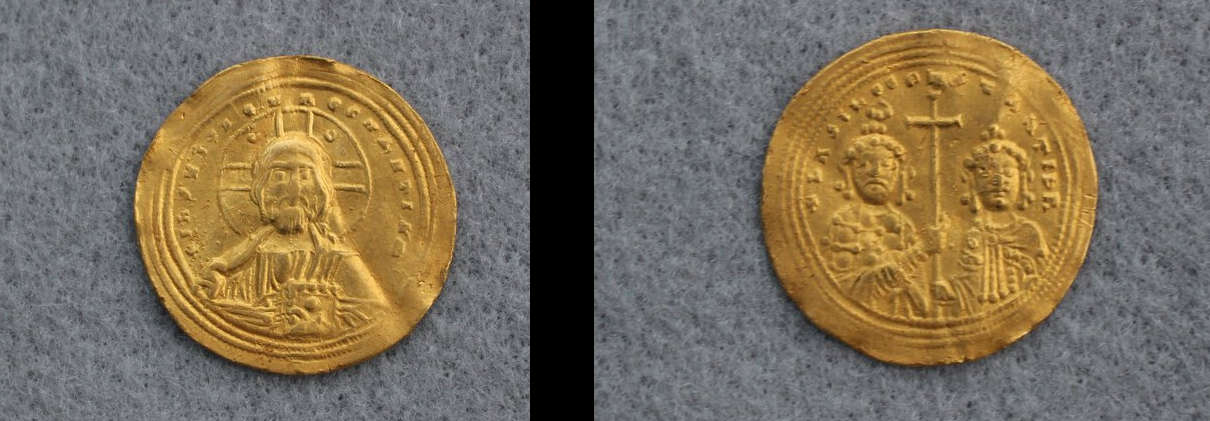A 10th-century Byzantine gold coin--found in Norway!
The find you don’t expect: a Byzantine gold coin... in theNorwegian hinterland! It happened in the mountains around the municipality of Vestre Slidre, a collection of hamlets and villages, two thousand inhabitants in all, located a hundred kilometers north of the capital Oslo, in Innlandet County. This is a histamenon, a gold solid minted in theByzantine Empire from 960 until the threshold of the 12th century.
On one side is a depiction of Christ holding the Bible, while on the other are the Byzantine emperors Basil II (left) and Constantine VIII (right), who ruled together for a time (they were brothers). The image of the two emperors allows the coin to be dated between 977 and 1025. The coin also has two inscriptions, one in Latin that says, “Jesus Christ, King of those who rule,” and one in Greek that says, “Basil and Constantine, emperors of the Romans.”
The coin was found by a metal detector enthusiast who was hiking in the mountains of Vestre Slidre, and it appears excellently preserved despite being more than 1,000 years old. How it could have ended up from Constantinople to this area in central Norway is unknown. According to a note from the county of Innlandet, the arrival of this coin in Norway may be related to the story of King Harald III of Norway, who at a young age, around 1033, exiled following a revolt, moved to Constantinople along with a handful of 500 men and served in the Byzantine army, participating in several campaigns in Asia Minor and the Mediterranean (he also took part in the Byzantine expedition to Sicily in 1038). He would not return to Norway until 1046, becoming king the following year. During his years in the service of the Byzantine emperors, Harald amassed great wealth, and it is likely that the coinage is somehow related to him, ending up in Norway along with other treasures that were later dispersed.
Indeed, the sagas tell that Harald and his men were extremely rich when they finally returned home to Norway in 1046, with their ships laden with gold and other valuables. Yet all this still does not explain how the coin got to this remote area. We do know, however, that Valdres Slidre was part of the diocese of Bjørgvin until 1125: one of the oldest routes through the diocese was called Bispevegen (“Bishop’s Road”) and passed through these parts, so it is not impossible that the coin was lost by one of the priests during his travels. In addition, the ancient transportation routes, the Salt Roads, were based on the salt trade from western Norway, so it is also possible that the coin was used as part of some commercial transaction, to pay for salt and herring that came from the west of the country, or iron, reindeer hides and antlers that were instead typical products from the eastern regions.
In any case, in 2024, when weather permits, archaeologists will study the site of the find in search of more information. At the moment, the county of Innlandet points out, nothing more can be said about the site other than that it is a beach (the territory of Vestre Slidre is in fact full of rivers and fjords where it is not uncommon to come across small beaches).
 |
| A 10th-century Byzantine gold coin--found in Norway! |
Warning: the translation into English of the original Italian article was created using automatic tools. We undertake to review all articles, but we do not guarantee the total absence of inaccuracies in the translation due to the program. You can find the original by clicking on the ITA button. If you find any mistake,please contact us.





























